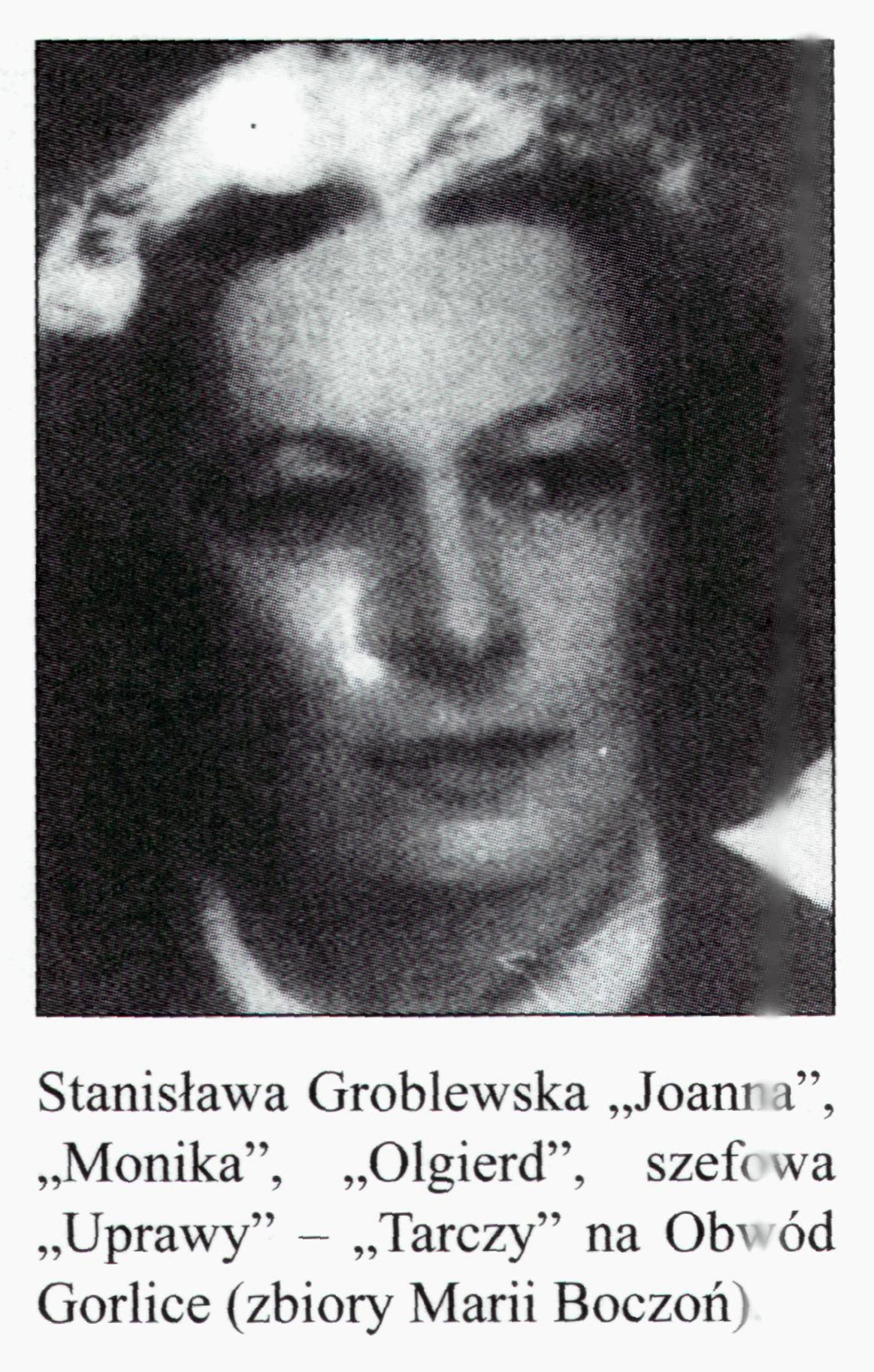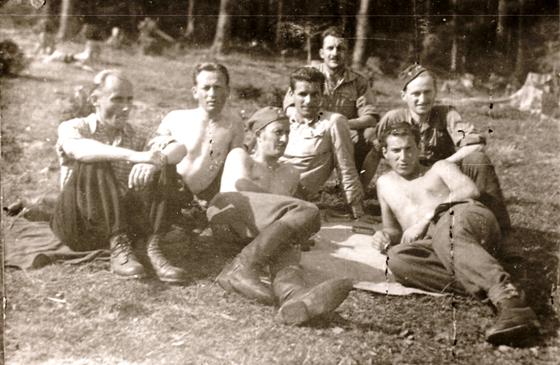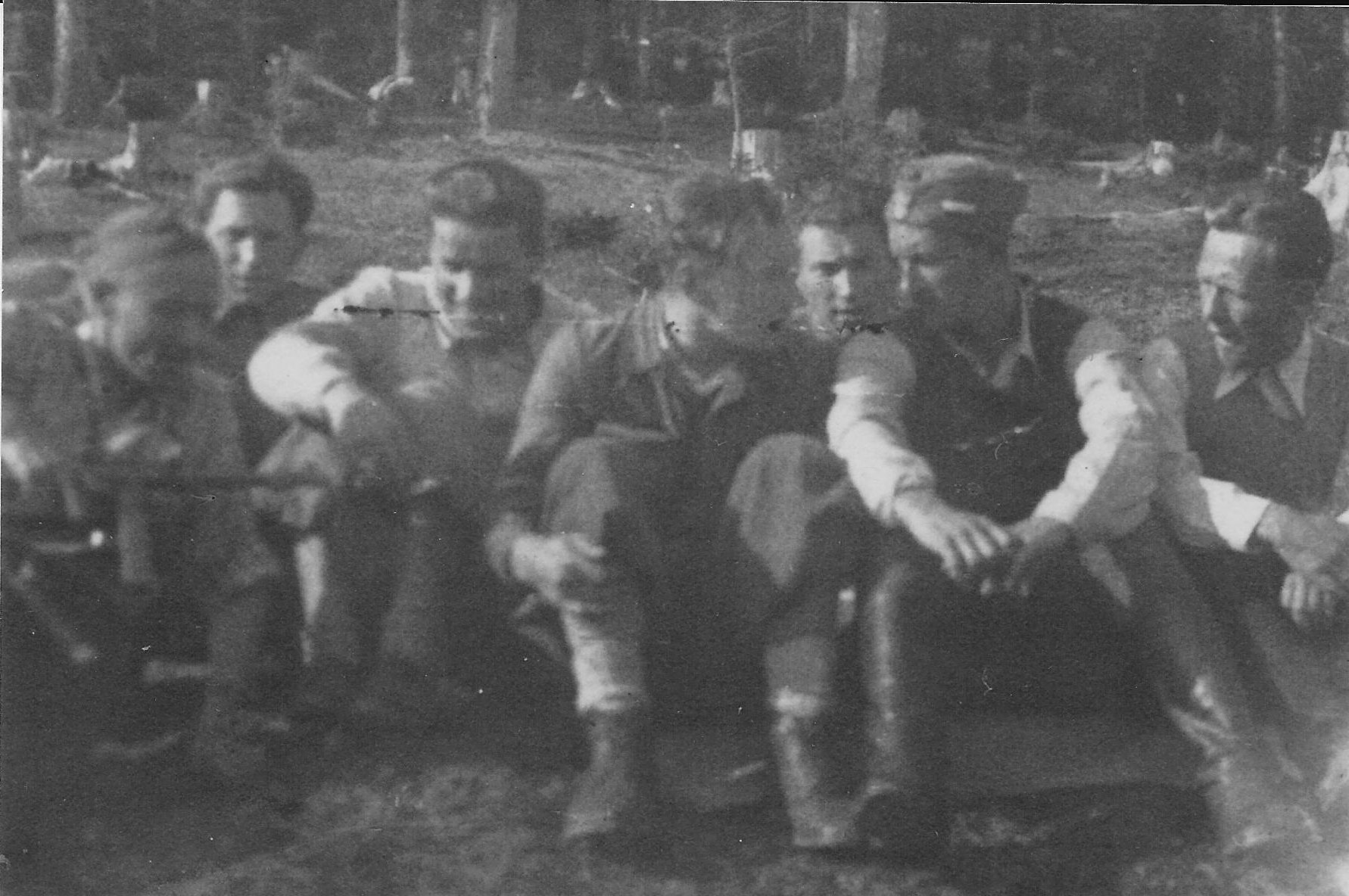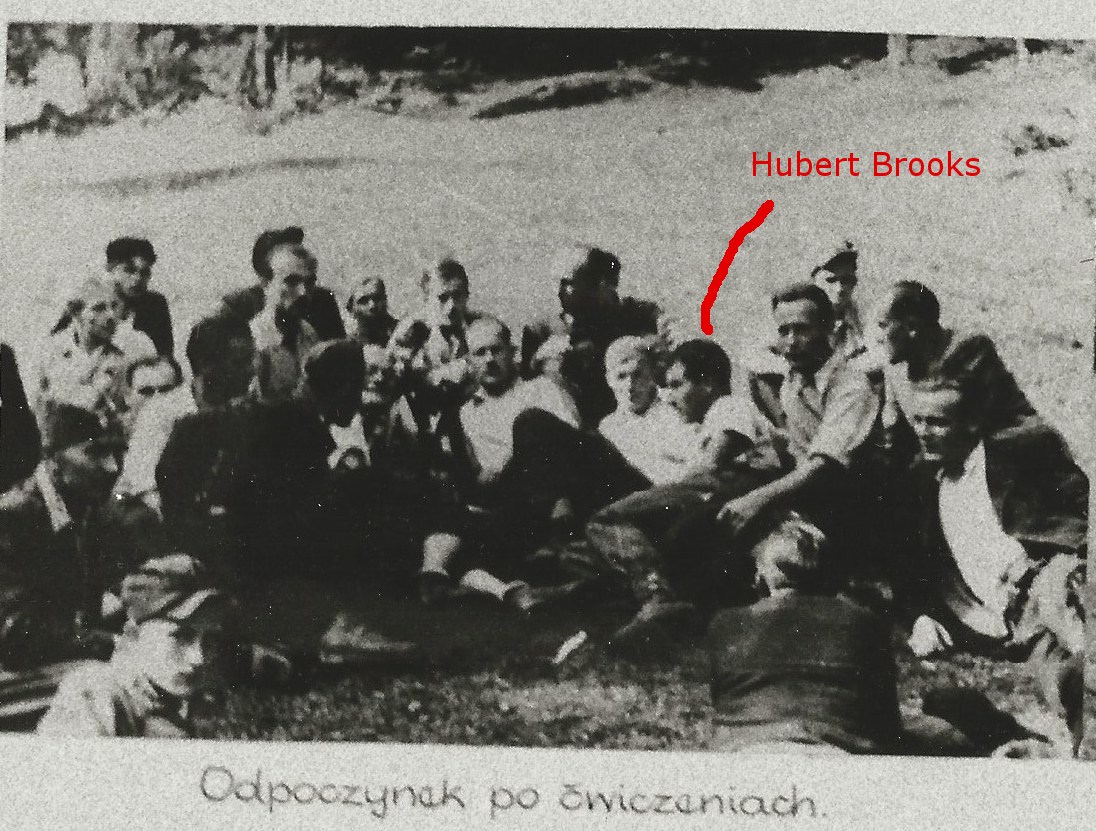
The Life and Times of Hubert Brooks M.C. C.D.
A Canadian Hero

 |
|
 |
The Gorals, with their unfailing knowledge or the terrain gained from generations or goatherds and woodcutters before them often gave us the advantage over superior German forces. By this time anyhow, I believe our company of sharpshooters could have taken on any U.S. or British unit and proved a match for them! So many stories had circulated on this account that by the latter half of 1944 the Germans began to think there was a Polish partisan behind every tree and it undoubtedly took away some of their stomach for fighting in the hills.
We had many informants and stool pigeons helping us, but the Germans too had infiltrated our ranks. One of our members proved to be a German agent and because of him several staff officers were captured.
The brigade adjutant was one of them who was captured by the Germans. During the interrogation they broke his arms in portions starting at the wrist. He lasted thus for three weeks, never told them what they wanted to know and only died when they put police dogs on him.
The brigade commander's villa was surrounded by Germans. Instead of delivering himself to the Huns – he shot himself. By now we had a full brigade fighting and Captain Borowy was promoted to major and placed in command of the brigade.
It was about this time I was told by A.K. Brigade Headquarters in Cracow that another British sergeant named Sullivan, who had fought with the partisans in the Gorlice district, would be transferred to our company. A few days before the transfer, Sullivan was taken prisoner by German Bahnschutz (railway police) in a surprise raid. Although he insisted he was an escaped POW, he was executed on the spot.

|
EDITOR'S NOTE: Since reading my father's account of this British soldier "Sullivan", I have tried to find out a bit more about him. Surprisingly,
my Polish Historical contacts were unable to provide me with any information regarding a British Sgt Sullivan. This is unusual given the long memories the Poles have in remembering those that
assisted them during the war. I have also tried a modest search of the British National Archives in Kew, also without luck.
Recently (Feb / 2016) I was contacted by Mr Allan Poole, a former member of The Royal Welch Fusiliers, who was representing Mr. Peter Sheady. Mr. Poole wrote me to suggest
that he believed that the "Sgt Sullivan" referenced in my father's account is really Private Frederick (Fred) Edward Sheady (Service Number: 4189938) part
of the British regiment 1st Bn. The Royal Welch Fusiliers due to the similarity of the various accounts.
Fred Sheady spent a period of time fighting with the Polish Partisans (using the alias "Aliant") at Gorlice before he was killed by the Germans around about the date of March 13, 1944. Sheady was 28 years old.
In 1940 Fusilier Sheady fought with the British Expeditionary Force in France and Belgium. As reported in the
Liverpool Evening Express of Friday 15th November 1940 he was wounded and was taken prisoner by the Germans and became a POW
(POW number: 16929) at Stalag VIII B Lamsdorf in Upper Silesia
circa November 1940
(see German Police Gazette Notice of Sept 1942 containing the name of escaper Frederick Sheady
(which lists ten British and two Polish Prisoners of War who had escaped from the Lamsdorf camp by cutting through the perimeter wire of the works compound fence, on the night of September 7th 1942)
One can see in this image that Fred's birth date is given as 15-4-15 and place of birth Flintshire. His POW number is given as 16929. His height is given as 1.75m and he is described as having brown hair.
The only error in this 1942 German Police description is the fact that Frederick is described as a "Flieger", an airman. Original credit to RAF POW Bill Lawrence for obtaing this list.
This LIST can also be seen at Imperial War Museum SCENES AT STALAG VIIIB (LAMSDORF) PRISONER OF WAR CAMP, GERMANY 1942 - 1945. THANK YOU to Rod Barron for providing me with this link.)
At an unknown date Fred escapes from the POW Camp at Lamsdorf. (According to the Polish Language account of Stanisława Groblewska this was Fred's 7th time escaping!
According to historical archives located in Kraków, Groblewska historical writes her remembrances:
"Frederick showed me his diary in which he writes;
I escaped from camp 7 times .... because an Englishman can not be a slave"
So on his seventh try Fred was finally successful.)
Circa November 10th 1943 Sheady was brought from Kraków to Bystrzyca to the mansion of STANISLAWA Groblewska (Alias �Joanna�) a woman partisan and courier.
The location is approximately 15kms from the village of Stróże in the district of Małopolska. (This lady is described in an internet article as a "Hero of the Gorlice Resistance Movement" - see PHOTO below right).
He remained with Groblewskich until 28 February 1944 where upon he joined the AK guerilla group OP "Zbik".
Sheady was there barely a dozen days - when on March 10, 1944 he was killed at Stróże (shot) - the death scene, was confirmed some 30 mins after the Nazis killed the men by a then 12 year old boy,
Tadeusz Wiatr, who is still alive today.
One (internet) account describes Sheady's death as follows:
"Five partisans (including Sheady) were performing an illegal purchase of ammunition for the partisans. On the eve of purchase, the house where they were staying at was surrounded by soldiers of the Wehrmacht.
During the ensuing fight with the Germans, all the partisans were killed.
There is also a suggestion that Fred Sheady was initially wounded in the leg, then summarily executed where he lay. Later the Polish partisans killed the informer who pinpointed the group in the house.
Sheady was initially buried at Stróże Cemetery with all the other partisans that were killed that day. Years later a member of the Sheady family was visited by a Polish lady
with a young boy called Stephen who she said was Fred's son.
Given that Hubert Brooks never met "Sullivan", and that he heard the name "Sullivan" perhaps 2nd or 3rd hand from his Polish contacts who perhaps did not precisely pronounce the name Sheady correctly, and given the time frame and similarity as to how Sullivan / Sheady was killed, and given that Sheady DOES appear in Polish AK records and Sullivan does not, I'm now of the opinion that Sgt Sullivan is really Private Frederick (Fred) Edward Sheady (Service Number: 4189938) a soldier with the British regiment 1st Bn. The Royal Welch Fusiliers.
The Sheady Family assisted by retired members of The Royal Welch Fusiliers are searching for the final resting place of Fred Sheady's body in Poland such that it might one day be repatriated home to the UK. Fred was initially buried in Stróże and after the war his body was sent to Gorlic, exactly where is not known.

REFERENCES to Fred Sheady ( double click on the hyperlinks to access)
|
|
We had occasion to attack a railway station at Kasina Wielka soon after that and it was my section's task to assault and seize the building which was used as sleeping quarters for the Bahnschutz Police.
John, myself and 2 Poles got the sleeping men out of their beds fast enough and lined them up along the wall. While we were doing this, Lieut. Przyjaciel destroyed the tele–communications room in a different part of the station. As well, the main strength of the Company attacked a train load of Organization Todt (OT) men situated in railway cars used as sleeping quarters. Attached to these railway cars was a truck load of ammunition.

|
|
|
I had sent one of my men out to check the other sections when all hell broke loose in the rail yards. We shot all eight men in the room and immediately left to reinforce the others. Following this, the attack on the train was abandoned as the element of surprise had been lost. Lieut. Zawisza was shot through the knee, and one Pole was killed as a result of this attack. The killing of the eight Germans was our own private reprisal for Sgt. Sullivan whom we'd never met. (Editor's Note: "Sullivan" is now believed to be Private Frederick (Fred) Sheady as per section above)
As a result of the wounding of Lieut. Zawisza, about this time Lieut. Przyjaciel was appointed the new C.O. of the Company.
It was the middle of June 1944 now and with the summer's heat, the fighting too increased in intensity. When we heard that 25 Germans were touring our area (around Kamienica) inspecting farms and tallying cattle for shipment to the Reich, we set up an ambush for them at Łopień. On their route was a bridge over the Dunajec River.
We set up a "V ambush" on the road beyond it; two machine guns hidden in clumps of brush either side of the road, six guys with Tommy guns and a few more covering them with 303s. We opened up at 50 yards as the truck full of Germans crossed the bridge. We fired for an entire 5 minutes. Only one man escaped from the truck and he was shot as he fled into the woods.
Afterwards we found the truck was so riddled with bullets that the German arms were useless; the rifle butts were splintered like matchwood. We left the dead bodies on the bridge, one with the head separated from the body. We were told that the Germans only dared come to the scene to collect the bodies 2 days later.
A week later in the Tymbark district, along with Lieut.Wilk (Wiktor Lach), we ambushed 40 Germans herding 100 head of cattle toward the German border. The Germans fled after we'd killed two of their number, although there were only 14 of us. We rounded up the cattle and distributed them to neighboring farmers. Then when we needed meat we'd ask the farmer to slaughter a steer and we gave him one side for safeguarding our cattle.

|
|
|
We were having trouble at that time with Russian guerillas fighting in the south of Poland. The bulk of them were Russian infantry cut off some time before by the Germans. Unfortunately there were also a handfull of Belarusian partisans who before the war had served in the Polish army, knew the area, the language and still had some contacts with Home Army soldiers. In short they knew too much. Moscow then parachuted MVD men (Ministerstvo Vnutrennikh Del aka Ministry of Internal Affairs) in to organize the group into a Soviet guerilla unit. This Soviet guerilla unit lived off the land and seized cattle and food from the villagers in our area.
We met them and tried to come to an agreement with them about food supplies and reinforcing each other in the event of pitched battles, but they were tough characters and although they made a mutual aid bargain they never stuck to it.
Our only consolation was that our renegade Sgt. Major Ogień joined up with them for a while and then stole a great portion of their supplies and arms.
There were no reprisals so far as I know for our slaughter of the 25 German farm inspectors, but an unsuccessful attack on a train at Porąbka in July brought terrible reprisals. We had intended to dynamite the train, but either the caps failed or the charge was too small and we had to content ourselves with raking the train with small arms fire. We must have shot someone important aboard the train for the Germans razed the village of Porąbka, separated the 40 men, women and children they caught there and bayoneted them all before tossing them on the flames.
It was August 1944 before we discovered the whereabouts of the officer in charge of the Porąbka massacre. He was in the village of Strzyzyce (Editor's Note: Probably meant village of Szczyrzyce) with a couple of horse–driven wagons supervising the collection of supplies, food and beer and so on, for the garrison eight miles away.

I set out immediately with John Duncan and three others to liquidate him. We caught the wagons in crossfire as they rolled slowly along the country road. We shot the commanding officer and another Bahnschutz officer with him, acquiring two Tommy Guns as a side benefit.
We gave them the quickest burial I have ever seen. It could not have taken more then five minutes. We had to go back three days later and bury them deeper as villagers warned us that one foot was still sticking out and there was an intensive search for them throughout the area.
The big battles were starting now. We were called in to reinforce an A.K. unit at Mysienice who'd been battling a vastly superior German force near the village of Lipnik and Wisniowo for several days. The battle raged for two weeks with the Germans bringing up tanks, armored cars and spotter aircraft for their artillery. In the course of the battle, two tanks and several armored cars were destroyed, one armored car captured and over 80 Germans killed. There were 6,000 German troops by the time the 600 A.K. partisans pulled out.
They burned Lipnik to the ground and sent all the villagers they captured to the stake. They tied them all to stakes in a large barn and lit fires near to them. They opened the barn doors so that the draught carried the flames to the unfortunate villagers then they closed the doors and again opened them to prolong the agony!
I made sure at this time that henceforth my revolver would never be quite empty. There would always be one last bullet in it for myself.
|

|
Mid September 1944 we withdrew deeper into the hills to rest and regroup our forces and the Germans in turn prepared to clean
out the entire area.
John and I were staying in the house of some friends near Skrzydlna a mile from camp one night and were awakened at dawn to learn
that a troop of Germans was approaching the house!
I raced out the back door and down a gulley. I could see a large number of troops
deployed along the highway a mile away and howitzers already in position.
Our "Topór" company had realized there was a scare on and by the time I reached them they and had struck camp. They were heading straight towards the hidden howitzers! I ran up front of the column to warn the CO of the danger below. We reversed our course and started for the summit of the hill. I took a scouting party ahead and we had almost reached the ridge when one of my scouts opened fire. He had seen a German helmet above us. The hillside was suddenly blazing with fire. Volleys of small arms fire poured down on us from the ridge and from below the howitzers fired in support of the ascending troops. We were surrounded!
From the firing I figured there might still be a gap open at the western end of the hill so I took 50 of the
men and led them through the trees that way. It turned out the encirclement was not complete and we broke through!
Two days later when we re–grouped I learned the rest of the company had escaped also. Amazingly we had not lost a single man.
For this action I was later awarded the Polish Cross of Valor –corresponding to the British D.F.C.
In this action, Sgt. Duncan was of very great assistance and behaved with exemplary courage. Duncan received the rank of
2nd lieutenant after this action.
On September 18, 1944 I took part in the battle with the "Wilk II" partisan unit (under command of Lt. Wiktor Lach "Wilk") in the Massif Cietnia.

|
| PREVIOUS PAGE | GO TO TOP OF PAGE FOR INTER- and INTRA- CHAPTER NAVIGATION MENUS |
NEXT PAGE |
The Life and Times of Hubert Brooks M.C. C.D.